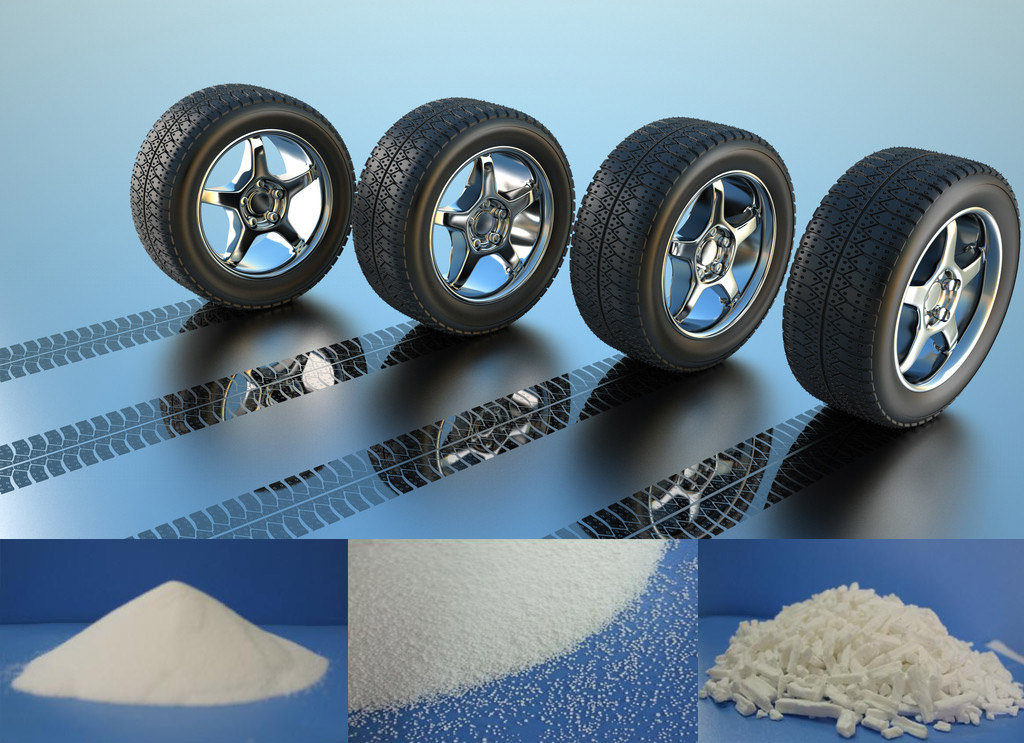Silica is naturally found in sandstones and other rocks. It is a colorless hard compound good for rubber industries when silica particles are well dispersed. The specialty silica is mainly prepared after chemically reacting it with blast sand. The industries where they are used decides its form i.e. whether it has to be fine or granule. The demand for specialty silica has increased over a period of time due to its increased use by the end use industry.
The tire and non-tire rubber markets are the industries where specialty silica is of greater value. Highly dispersible silica acts as an important filler in such industries because of its high-end properties and performance. This market can be segmented into tire manufacturers for their novel tread compounds. Other than tire manufacturers they are also used in footwear industries especially for manufacturing sportswear soles.
The growth in the automotive industry has increased the demand for high dispersible silica globally. As per journal of applied polymer science article about the influence of highly dispersible silica filler, on the physical properties tearing energy and abrasion resistance of tire tread compound (2019), highly dispersible silica has a dibutyl phthalate (DBP) absorption value of more than 180cc 100g-1 which is more branched structure.
Leading highly dispersible silica manufacturers such as Brisil produces precipitated silica & highly dispersible silica using biomass (rice husk ash & others) for tires, rubber products, paint, toothpaste, food, and other industries.
The properties of highly dispersible silica (HDS) are as follows:
- Process Improvement: – It helps in meeting high standard quality and high optimization of the product.
- Ultimate tensile strength: – It offers greater tensile strength i.e. the ability of the product to stand under or resist under tension. The maximum tensile strength of the product helps in overcoming failure by the amount of stress applied to it.
- Resistance to wear and tear: – Reduced rolling resistance, improved traction on the wet surfaces helps in less wear and tear of the tires. Same as in the case of the soles of sportswear giving them long service life and makes it better to handle on dry surfaces.
- Abrasion resistance: – The abradability decreases i.e. it has the ability to resist the wearing caused while the product is in contact with another material.
- Stiffness or temper: – It provides better hardness to the material making it stiff and strong.
- Good winter performance: – Special winter tires are necessary as the all-season or summer tires don’t perform well as the temperature drops. However high dispersible silica provides novel tread compounds that guarantee good winter performance.
- Wet Traction: – Traction means grip that a vehicle or tire has on the road. Good tire tread boasts deep grooves into a surface thus keeping good contact with the road. A good grip on wet pavement is necessary for tire’s best performance. This is possible because of the tread design.
- Low rolling resistance: – It reduces the rolling resistance thus improving the traction on the wet surfaces.
The benefits or advantages of the mentioned are many, however, the mentioned are in relation to the tire industry as it is mainly used by tire manufacturers on a large scale globally. It improves mileage due to low or improved rolling resistance. Low rolling resistance of the tires helps in losing less energy and requires fewer efforts. It improves the fuel efficiency thus contributing to greenhouse gas emission. It reduces the consumption of carbon black, thus contributing to better environmental performance. It provides safety in wet seasons enabling greater grip on the wet surfaces. Also, it provides better performance on dry surfaces during winter or when the temperature becomes too low.






